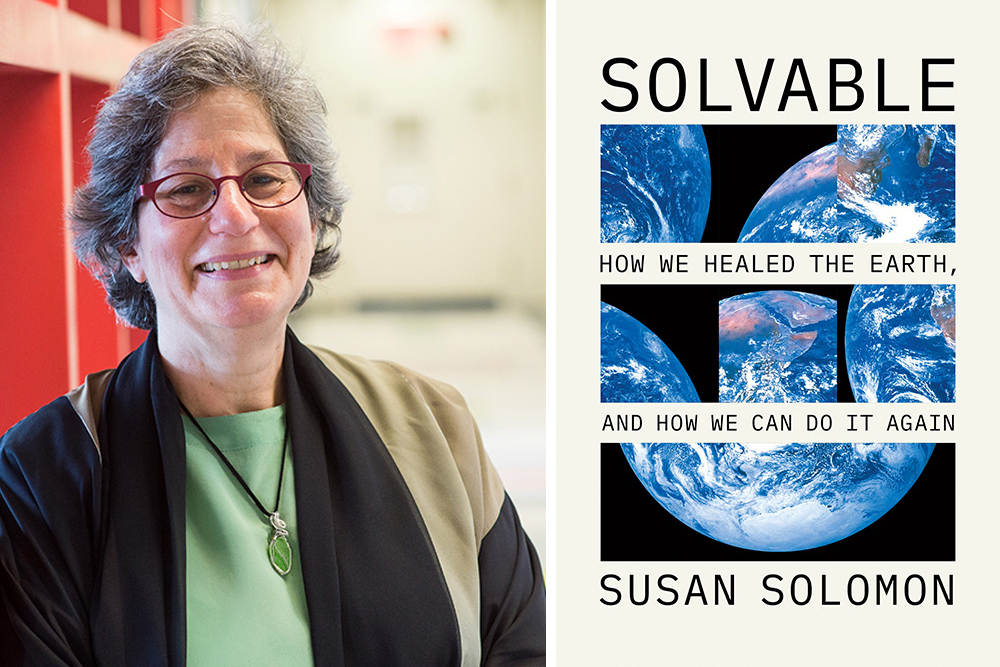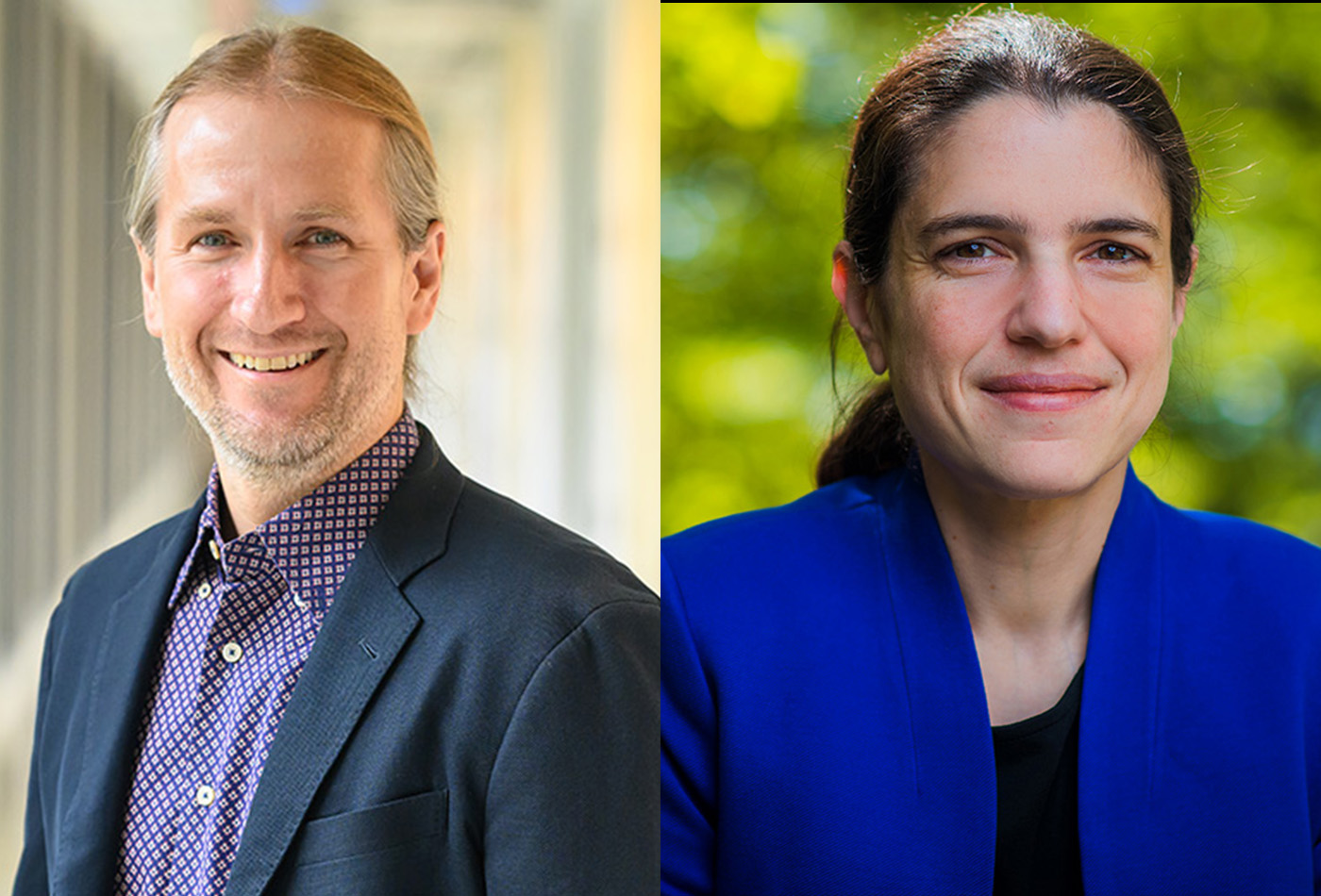Collaboration runs through J-WAFS-funded projects
Researchers from across MIT showcase J-WAFS-funded projects tackling critical water and food systems challenges from solutions-oriented perspectives.
“In order to do the kind and scale of work that we do, international collaboration is essential. However, this can be difficult to fund,” Chris Voigt said. “J-WAFS is providing the support that we need for the cross-institutional and cross-sector collaboration that is enabling our work to move forward.”
Voigt, a professor in the MIT Department of Biological Engineering, made those comments at the first of two research workshops produced by the Abdul Latif Jameel Water and Food Systems Lab (J-WAFS) on Sept. 14th and Sept. 28th at the Samberg Center. The annual workshop brings members of the MIT community together to learn about the latest research results from J-WAFS-funded teams, to hear about newly funded projects, and to provide feedback on each other’s work.
The specific collaboration Voigt was referring to is a project that connects the work on prokaryotic gene clusters in his lab to research at the Max Planck Institute of Molecular Plant Physiology in Germany and the Center for Plant Biotechnology and Genomics at the Universidad Politécnica in Spain.
Voigt and experts in plastid engineering and plant gene expression from these partnering institutions are working to engineer cereal grains to produce their own nitrogen, eliminating the need for added fertilizer. Their goal is to transform farming at every scale — reducing the greenhouse gas emissions of industrial fertilizer production as well as problems of eutrophication from nutrient run-off and reducing the cost of added nitrogen fertilizer. With a growing world population and increasing demand for grain as a food and fuel, the need for innovations in agricultural technologies is urgent, yet the technical challenges are steep and often require complementary areas of expertise. Therefore, when researchers like Voightshare their skills and resources with other global experts in pursuit of a shared goal, the combined effort has the potential to produce dramatic results.
The collaboration is a hallmark of MIT’s research culture. J-WAFS seeks to leverage that collaboration by being particularly welcoming of cross-disciplinary project proposals and research teams. In fact, the majority of J-WAFS current and concluding projects are led by two or more principal investigators, with many of those teams being cross-disciplinary.
In the case of a J-WAFS Solutions-funded project led by principal investigators Timothy Swager and Alexander Klibanov from the Department of Chemistry, interdisciplinary collaboration grew as the work on the project progressed. The team is developing a handheld food safety sensor that uses specialized droplets — called Janus emulsions — to test for bacterial contamination in food. The droplets behave like a dynamic lens, changing in the presence of specific bacteria.
In developing optical systems that can indicate the presence or absence of bacteria, including salmonella, by analyzing the light either transmitted through or emanating from these dynamic lenses, the researchers realized that they did not have the expertise to fully understand the optics they observed when the droplets were exposed to light. For that, they needed help. Swager reached out to Mathias Kolle, an assistant professor in the Department of Mechanical Engineering, whose expertise in optical materials proved to be key.
Kolle, who has received J-WAFS seed funding for his own work on industrial algae production, and his graduate student Sara Nagelberg provided the calculations necessary to understand the mechanics of light’s interaction with the particles. These insights contributed to sensor designs that were dramatically more effective, and the team has now launched a startup — Xibus Systems — and is currently working on product development.
“This is the beginning of a much longer story for us,” Swager commented, reflecting on his collaboration with Kolle’s lab.
Several other research teams are applying multiple disciplinary perspectives to their work.
In one project, Evelyn Wang, the Gail E. Kendall Professor in the Department of Mechanical Engineering, has teamed up with Mircea Dincă, an associate professor in the Department of Chemistry, to engineer highly absorbent metal organic frameworks in a device that pulls drinking water from air.
In another, assistant professor David Des Marais in the Department of Civil and Environmental Engineering is collaborating with Caroline Uhler, the Henry L. and Grace Doherty Assistant Professor in the Department of Electrical Engineering and Computer Science, to develop tools to analyze and understand the ways that genes regulate plants’ responses to environmental stressors such as drought. Their goal is to apply this understanding to better breed and engineer stress-tolerant plants so that crop yields can improve even as climate change creates more extreme growing conditions.
Meanwhile, J-WAFS itself collaborated with a partner program in organizing the event. The second day of the workshop coincided with the Tata Center’s annual research symposium, which was also held at the Samberg Center. J-WAFS and Tata’s missions have some significant overlaps — many Tata-funded MIT projects address food, water, and agriculture challenges in the developing world. The two groups merged audiences for their afternoon sessions and presentations to take advantage of these synergies, enabling participants of each event to interact and to learn about the food and water innovations that the programs are supporting.
By funding research in all schools at MIT and seeding and supporting innovative collaboration that crosses departments and schools alikeJ-WAFS seeks to advance research that can provide answers to what might be one of the most pressing questions of our time: How do we ensure safe and resilient supplies of water and food on our changing planet, now and in the future? When experts come together around an urgent question like this one, each one approaches it from a different angle. And when successes emerge from collaborations in J-WAFS-funded projects, it demonstrate sthe value of MIT’s culture of interdisciplinary collaboration.





